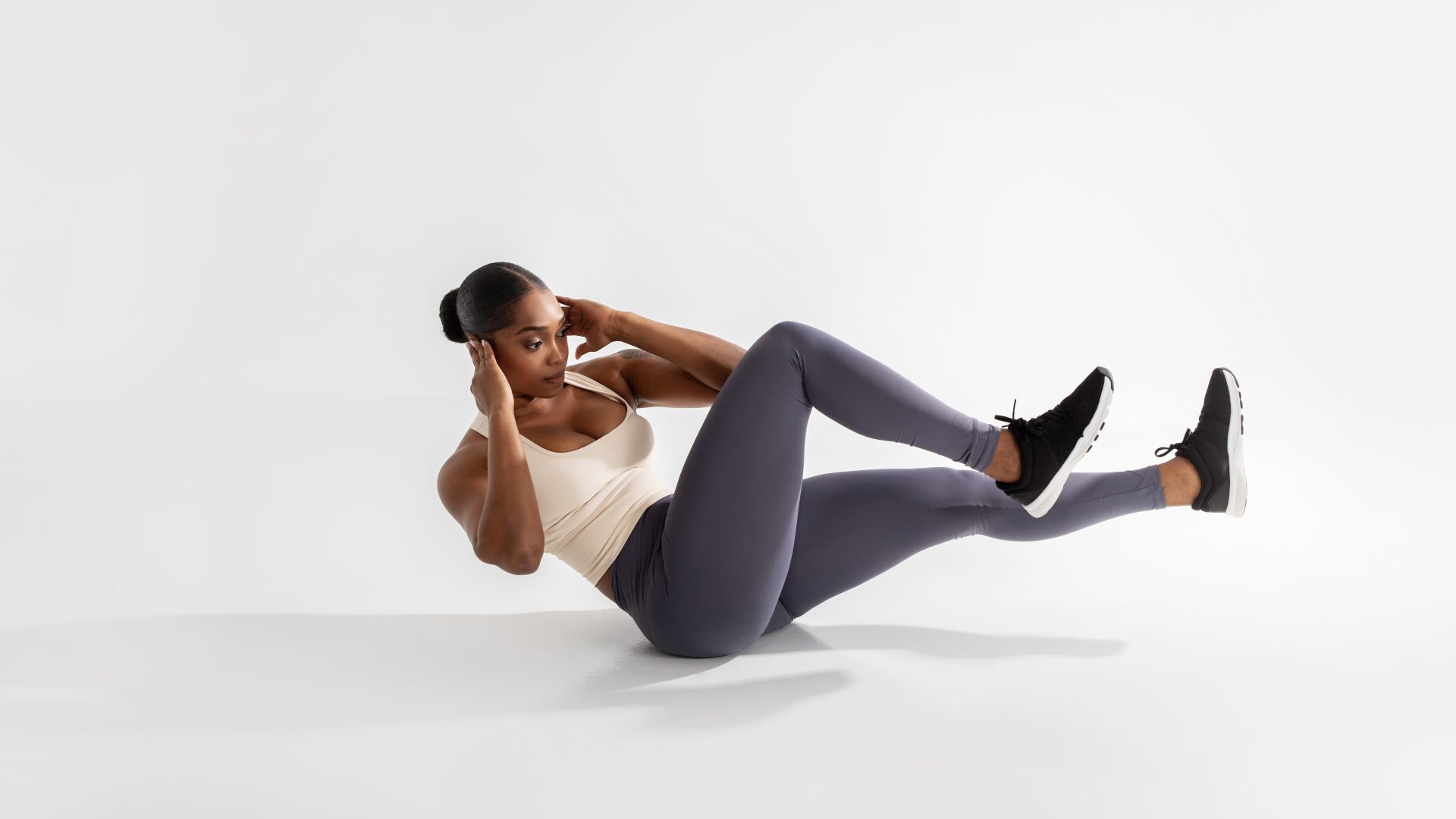The humble crunch has dominated core training routines for decades, appearing in everything from military fitness tests to celebrity workout videos. This seemingly simple exercise promises a path to those coveted six-pack abs through repeated spinal flexion movements. Yet despite its enduring popularity, fitness science has increasingly scrutinized whether the traditional crunch deserves its prominent place in modern exercise regimens.
How crunches actually work your body
Understanding the biomechanics behind crunches reveals both their benefits and limitations. During a standard crunch, the primary movement involves flexing the spine forward while the rib cage approaches the pelvis. This action primarily engages the rectus abdominis—the “six-pack” muscle running vertically along the front of the abdomen.
Secondary muscles activated include the obliques (both internal and external) that wrap around the sides of the torso, and to a lesser extent, the transverse abdominis, the deep core muscle that acts like a natural weight belt stabilizing the spine. The hip flexors also participate, particularly when the legs remain anchored during the movement.
This muscle activation pattern explains why crunches create the burning sensation associated with effective ab workouts. The rectus abdominis undergoes significant tension during the concentric (lifting) phase and continues working isometrically at the top position, creating the familiar “ab burn” many exercisers seek as confirmation of an effective workout.
The 6 concerns fitness science has identified
While crunches effectively target specific abdominal muscles, several evidence-based concerns have emerged regarding their universal recommendation and long-term effects on physical health.
- Potential for spinal stress under repetitive loading
The human spine contains 23 intervertebral discs serving as cushions between vertebrae, absorbing shock and facilitating movement. These discs have limited blood supply and rely on nutrient diffusion for healing. Research in spine biomechanics indicates that repeated flexion movements—exactly what crunches demand—can potentially contribute to disc compression over time.
Each spinal disc has a finite number of compression cycles before microscopic damage accumulates. While a healthy spine withstands considerable stress during daily activities, unnecessarily adding thousands of flexion cycles through high-repetition crunches may accelerate wear patterns, particularly in populations with existing disc vulnerabilities.
The lumbar spine (lower back) bears significant pressure during crunches, with studies measuring intradiscal pressure increasing substantially during the movement. This pressure increases further when performed with poor technique or excessive repetitions, potentially contributing to disc herniation risk in susceptible individuals.
- Limited functional transfer to real-world movements
Core muscles serve primarily as stabilizers rather than prime movers in most athletic and daily activities. The predominant function of abdominal muscles involves resisting movement (anti-extension, anti-rotation, anti-lateral flexion) rather than creating it through spinal flexion.
Most sports and daily life activities require maintaining a neutral spine while transferring force between the lower and upper body. Traditional crunches train the opposite pattern—actively flexing the spine against resistance—creating a potential mismatch between training and functional requirements.
The isolation nature of crunches also fails to teach proper core bracing techniques essential for heavy lifting, rotational sports movements, or maintaining posture during prolonged activities. This disconnect potentially limits the exercise’s carryover to improved performance outside the gym.
- Inefficient activation of deep core stabilizers
The core musculature consists of multiple layers working together as an integrated system. While crunches effectively target the superficial rectus abdominis, they provide minimal stimulus to deeper core muscles like the transverse abdominis and multifidus that play crucial roles in spinal health and stability.
These deeper muscles require specific activation patterns trained through bracing, hollow body positions, and resistance to movement rather than the dynamic flexion of crunches. The transverse abdominis, in particular, activates more effectively during exercises emphasizing spinal stability rather than mobility.
Research using electromyography (EMG) measurements demonstrates that exercises like planks, dead bugs, and Pallof presses often generate equivalent or superior activation of the complete core musculature compared to crunches, while imposing less compressive load on the spine.
- Reinforcement of problematic posture patterns
Modern lifestyle habits including prolonged sitting, device usage, and driving naturally promote a forward-rounded posture characterized by thoracic kyphosis (upper back rounding) and forward head positioning. This posture pattern strains the posterior chain and contributes to numerous musculoskeletal issues.
Traditional crunches essentially train and strengthen exactly this rounded position, potentially reinforcing problematic patterns already established through daily habits. For individuals with existing postural deviations, high-volume crunches may exacerbate the imbalance between anterior (front) and posterior (back) muscle groups.
The repetitive spinal flexion movement can also encourage shortened, tight hip flexors and abdominals, which in turn may contribute to anterior pelvic tilt—a postural position associated with lower back discomfort and compromised movement mechanics.
- Inadequate stimulus for visible definition
Perhaps the greatest irony surrounding crunches involves their association with developing visible abdominal definition. The reality remains that abdominal visibility depends primarily on body fat percentage rather than muscle size or strength. Even well-developed abdominal muscles remain invisible beneath sufficient subcutaneous fat, regardless of crunch volume.
Creating the coveted “six-pack” appearance requires reducing overall body fat through nutrition and energy balance, as spot reduction (losing fat from a specific area through targeted exercise) has been thoroughly disproven by research. This fundamental misunderstanding leads many to perform excessive crunches while neglecting the dietary aspects necessary for visible results.
Additionally, the rectus abdominis responds to progressive resistance like any muscle. High-repetition crunches with body weight alone quickly reach a point of diminishing returns for muscle development, making them an inefficient choice for those specifically seeking muscular hypertrophy.
- Potential for neck strain and poor technique
The standard crunch instruction to “bring your chest toward your knees” often results in trainees pulling on their necks rather than properly engaging their abdominals. This technique error places considerable stress on cervical vertebrae and associated structures, potentially contributing to neck discomfort or headaches.
The problem compounds when fatigue sets in during higher repetition sets, as form typically deteriorates further. Many individuals unconsciously shift from proper abdominal engagement to using momentum and neck flexion to complete repetitions, reinforcing problematic movement patterns.
This technical breakdown occurs most prominently among beginners lacking kinesthetic awareness and proper instruction, but even experienced exercisers commonly demonstrate form deterioration during higher-volume crunch protocols.
Better alternatives for core development
Modern exercise science offers numerous evidence-based alternatives that effectively strengthen the core musculature while addressing the limitations associated with traditional crunches.
Plank variations build comprehensive core stability by engaging the entire musculature simultaneously in a functional position. The standard forearm plank creates significant activation across all abdominal layers while teaching proper bracing techniques. Side planks specifically target the often-neglected obliques and quadratus lumborum, addressing rotational stability essential for athletic movement.
Hollow body holds, derived from gymnastics training, effectively engage the entire anterior chain while teaching proper pelvic positioning and spinal control. This exercise creates substantial rectus abdominis activation while simultaneously training the deep core stabilizers in a spine-friendly position.
Anti-rotation exercises like Pallof presses train the core’s primary function of resisting unwanted movement. By pressing a resistance band or cable away from the body while maintaining a neutral spine position, these exercises create significant core activation in a functional pattern transferable to sports and daily activities.
Farmer’s carries and other loaded carries train the core in its natural stabilizing role during locomotion. Simply walking while holding weights forces the entire core to engage isometrically to maintain posture and spinal position—precisely how these muscles function during real-world activities.
Dead bug exercises offer a spine-friendly alternative particularly valuable for those with back concerns. By maintaining constant pressure into the floor with the lower back while moving the extremities, this exercise trains abdominal bracing and coordination without spinal flexion stress.
When traditional crunches might still serve a purpose
Despite the legitimate concerns surrounding crunches, certain contexts exist where they may retain value as part of a comprehensive program. Understanding these specific applications helps create balanced perspective beyond simplistic “good versus bad” categorizations.
For bodybuilders and physique athletes specifically training for aesthetic muscle development, controlled crunches with added resistance (rather than high repetitions) can contribute to rectus abdominis hypertrophy. When programmed judiciously alongside stabilization exercises and performed with strict technique, weighted crunches offer a direct stimulus to the visible abdominal muscles.
Athletes in sports specifically requiring spinal flexion strength, such as certain gymnastics movements, boxing slip movements, or mixed martial arts defensive positions, benefit from sport-specific abdominal training that may include modified crunch patterns. These populations require targeted preparation for the actual demands of their activities.
Rehabilitation settings sometimes utilize carefully controlled partial crunches as part of progressive core reactivation protocols. These therapeutic applications typically involve minimal ranges of motion under professional supervision and differ substantially from fitness-oriented high-repetition approaches.
Individuals with fully healthy spines and well-balanced fitness programs may reasonably include moderate volumes of properly executed crunches without significant concern. The key factors involve appropriate technique, reasonable volume, and balanced programming including posterior chain and stabilization work.
Creating a balanced approach to core training
Rather than viewing core training through the binary lens of “crunches versus no crunches,” a more nuanced approach recognizes the value of training this complex muscle system through multiple movement patterns and functions.
Comprehensive core development requires addressing four key functions: anti-extension (resisting arching), anti-flexion (resisting folding forward), anti-rotation (resisting twisting), and anti-lateral flexion (resisting side-bending). A well-designed program includes exercises targeting each capacity rather than overemphasizing any single pattern.
Balancing anterior chain work (including any crunch variations) with posterior chain exercises like bird dogs, supermans, and back extensions creates muscular equilibrium supporting proper posture and movement. This balance proves particularly important for individuals spending significant time in seated positions.
Progressive overload principles apply to core training just as with other muscle groups. Rather than focusing exclusively on increasing repetitions, strategic increases in resistance, leverage disadvantage, and movement complexity more effectively advance core strength development.
Specificity remains essential for core training success. Athletes and fitness enthusiasts should analyze the actual core demands of their primary activities and prioritize exercises replicating those specific stability requirements. This functional approach yields better performance transfer than generic high-repetition protocols.
The bottom line on crunches in modern fitness
The scientific scrutiny of traditional crunches doesn’t render them universally harmful but does challenge their default position in core training hierarchy. Like many long-standing fitness practices, crunches have both benefits and limitations requiring contextual evaluation rather than absolute judgment.
For most general fitness purposes, emphasizing varied core training approaches stressing stability, anti-rotation, and functional movement patterns provides superior results with potentially less stress on spinal structures. This diverse approach better prepares the body for real-world movement demands while developing comprehensive core strength.
Visible abdominal definition—the goal driving many crunch-heavy routines—remains primarily a function of body composition rather than exercise selection. Understanding this fundamental reality allows more efficient program design focused on appropriate resistance training and nutritional strategies rather than endless repetitions.
Those who enjoy crunches and experience no associated discomfort can reasonably include moderate volumes within balanced programs. However, individuals with existing back issues, poor movement patterns, or specific athletic goals may benefit from prioritizing alternative core approaches better aligned with their needs and limitations.
The evolution beyond crunch-dominant core training represents not a rejection of tradition but rather the integration of expanded scientific understanding into more effective, sustainable exercise practices supporting long-term physical health and performance.












